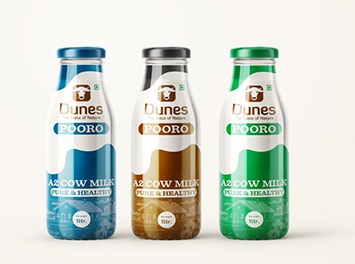Milk Bottle Packaging Design: An Essential Element of Product Delivery
In today’s competitive market, the packaging of milk bottles plays a crucial role in attracting customers and ensuring product freshness. The design not only influences a consumer’s buying decision but also communicates brand values and sustainability efforts. This blog post explores the key aspects of milk bottle packaging design, highlighting its importance for both consumers and manufacturers.
Innovative Materials and Sustainability
The push towards sustainability has significantly influenced milk bottle packaging design. Many manufacturers are now opting for eco-friendly materials that reduce their carbon footprint. For instance, alternatives to traditional plastic, such as plant-based plastics or glass, are becoming increasingly popular. These materials not only help in maintaining product integrity but also appeal to environmentally conscious consumers. As a result, brands that prioritize sustainable packaging often find themselves favored by customers who value ethical practices.
Functional Design Features
A successful milk bottle design goes beyond aesthetics; it also considers user convenience. Features like easy-pour spouts, resealable caps, and ergonomic shapes enhance the user experience. For instance, a well-designed spout can minimize spills while pouring, making it easier for consumers to use the product without mess. Additionally, clear labeling and nutritional information help consumers make informed choices. Such functional aspects contribute to customer satisfaction and can be the deciding factor in repeat purchases.
Brand Identity and Visual Appeal
Visual elements are crucial in establishing brand identity. The colors, fonts, and graphics chosen for milk bottle packaging can convey a brand’s personality and create an emotional connection with consumers. A striking design will not only stand out on store shelves but also build brand loyalty. Packaging that tells a story or emphasizes local sourcing can resonate with consumers, further reinforcing brand identity. As the shelves grow crowded with options, creative designs become essential for differentiating products in the marketplace.
In conclusion, milk bottle packaging design is a multifaceted aspect that involves sustainability, functionality, and branding. As consumers become more discerning, it is essential for manufacturers to invest in innovative packaging solutions that meet both environmental responsibilities and consumer preferences. If you’re interested in learning more about packaging design and how it can influence your purchasing decisions, explore the latest trends and best practices to stay informed.

